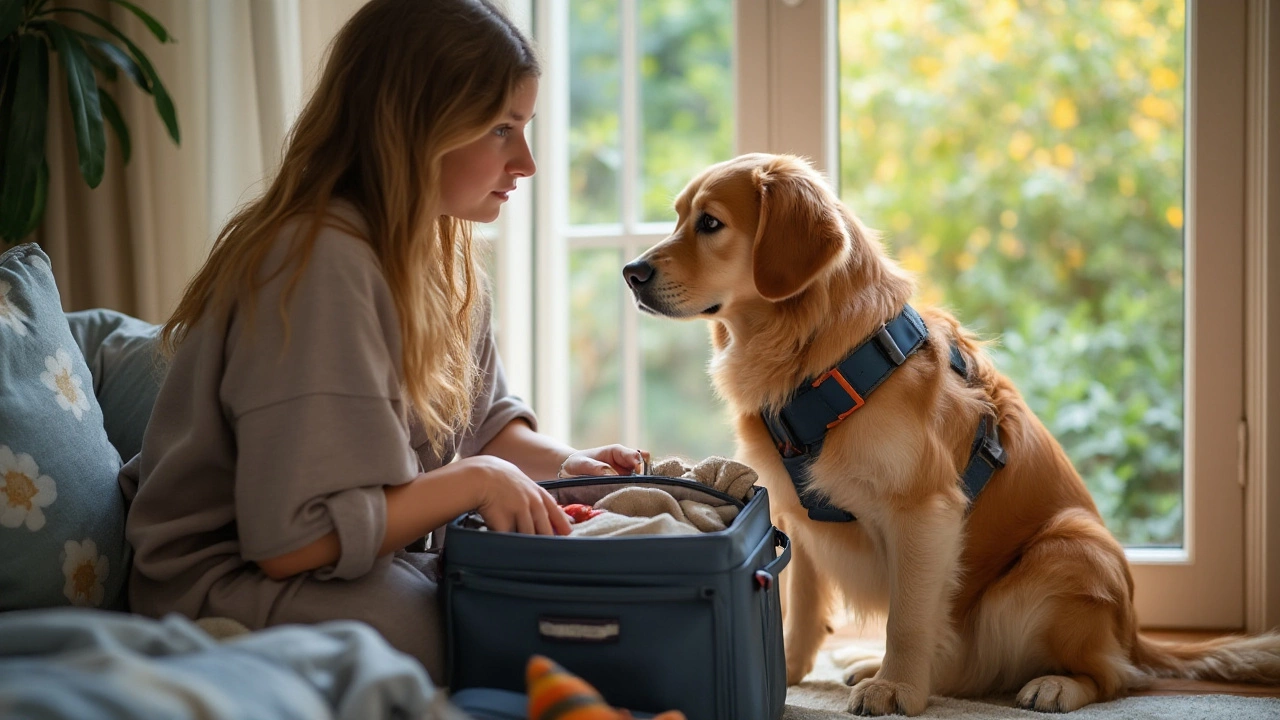Flying with Dogs Made Easy: Your Go‑To Guide
If you’ve ever stared at an airline’s pet policy and felt your brain melt, you’re not alone. The good news is that getting your dog on a plane doesn’t have to be a nightmare. With a little planning, the right gear, and a few insider tricks, you can turn a stressful ordeal into a quick, painless hop.
Paperwork, Health Checks, and Booking Basics
The first thing you’ll need is a clean health record. Most UK airlines ask for a recent vet check‑up (usually within 10 days) and a valid rabies vaccination certificate. Keep a digital copy on your phone and a printed copy in your carry‑on – you’ll thank yourself at the check‑in desk.
When you book, choose the airline that offers a pet‑in‑cabin option if your dog is under 8 kg (about 17 lb). Big breeds often have to travel as cargo, which means a different set of rules. Look for airlines that provide climate‑controlled cargo holds and let you track your dog’s position.
Some carriers require a pet travel fee up front, so have that ready. If you’re booking a return trip, double‑check that the pet fee is the same both ways – a surprise charge can ruin the budget.
Crate Prep, TSA Hacks, and In‑Flight Comfort
Choosing the right crate can make or break the journey. It must be airline‑approved (hard plastic with ventilation, or a sturdy soft‑sided carrier for cabin dogs). Measure your dog – they should be able to stand, turn around, and lie down comfortably. Add a familiar blanket or a chew toy to keep anxiety low.
Before you head to the airport, let your dog get used to the crate. Place treats inside and let them explore for a few days. A dog that sees the carrier as a safe spot will settle faster on the plane.
At security, you’ll be asked to pull the dog out of the carrier while the bag goes through the X‑ray. Keep your leash short and your voice calm – a panicky owner can scare the pup. Once through, put the crate back together quickly and give a reassuring pat.
During the flight, avoid feeding a big meal right before take‑off. A light snack a few hours earlier prevents tummy upset. Offer water through a spill‑proof bowl, but don’t over‑hydrate – the cabin can be dry.
If your dog is traveling in the cabin, the seat next to you must be able to accommodate the carrier under the seat. Seat selection matters; a window seat lets you look out and keep the carrier in sight, while an aisle seat gives you easier access for bathroom breaks.
Finally, think about insurance. Some policies cover pet travel emergencies, which can be worth the cost if you’re flying internationally. A quick call to your vet or pet insurer can clarify what’s covered.
By handling paperwork early, choosing the right crate, and staying calm at security, you’ll give your dog the best chance for a smooth flight. Pack a checklist, double‑check the airline’s pet rules, and you’ll be ready to board with confidence.
- Morgan Ainsworth
- 0 Comments
Essential Travel Tips for Flying with Your Dog: Comfort and Safety
Traveling by air with your dog requires planning and preparation to ensure their comfort and safety. This article covers essential tips for what to give a dog before a flight to keep them calm and stress-free during the journey. From understanding airline regulations to selecting comfortable travel supplies, every dog owner will find helpful advice here. Learn how to make the flying experience smooth for your furry friend.
View More
